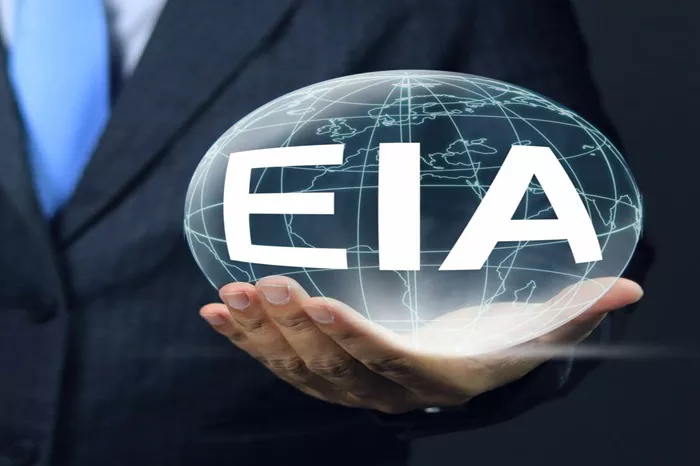Environmental Impact Assessment (EIA) is a systematic process aimed at evaluating the potential environmental consequences of a proposed plan, policy, project, or actual undertaking before deciding whether to proceed with the proposed action. It serves as a crucial tool for identifying and understanding the environmental implications of human activities, allowing decision-makers to make informed choices that balance developmental needs with environmental preservation. The term “environmental impact assessment” typically applies to individual projects proposed by entities such as businesses or governments, while the term “Strategic Environmental Assessment” (SEA) is used for evaluating broader policies, plans, and programs proposed by national agencies.
Purpose
The primary purpose of Environmental Impact Assessment is to integrate environmental considerations into decision-making processes related to development projects. By conducting an EIA, stakeholders can anticipate and mitigate potential adverse effects on the environment, human health, and socio-economic aspects of communities. Key objectives include:
Project Approval: EIA serves as a prerequisite for obtaining regulatory approvals and permits for development projects. It ensures that decision-makers have a comprehensive understanding of a project’s potential environmental impacts before granting authorization.
Decision-making Support: EIA provides decision-makers with relevant information to evaluate the trade-offs between development objectives and environmental conservation goals. It facilitates the selection of environmentally sustainable alternatives and the adoption of mitigation measures to minimize negative consequences.
Public Participation: EIA encourages public involvement by soliciting input from stakeholders, including local communities, environmental advocacy groups, and indigenous populations. This participatory approach enhances transparency, accountability, and the legitimacy of decision-making processes.
See also: 6 Steps Of Eia
Process
Environmental Impact Assessment typically consists of five interrelated stages, each serving distinct purposes and involving various stakeholders. These stages encompass the following activities:
Screening: The screening stage involves determining whether a proposed project or activity is subject to EIA requirements. It entails identifying projects with potentially significant environmental impacts that warrant detailed assessment. Screening criteria may vary depending on regulatory frameworks, project characteristics, and environmental sensitivities.
Scoping: Scoping aims to define the scope and boundaries of the EIA study by identifying key environmental issues, stakeholders, and assessment methodologies. It involves consultation with relevant authorities, experts, and affected communities to ensure that all significant environmental concerns are adequately addressed during the assessment process.
Impact Assessment: The impact assessment stage involves identifying, predicting, evaluating, and mitigating the biophysical, social, and other relevant impacts associated with the proposed project. It encompasses the collection and analysis of baseline data, modeling techniques, and stakeholder engagement to assess potential environmental effects across various spatial and temporal scales.
Mitigation and Management: Following the identification of potential impacts, mitigation measures are developed to avoid, minimize, or offset adverse effects on the environment and affected communities. Mitigation strategies may include design modifications, operational controls, habitat restoration, and community development initiatives. Effective mitigation measures aim to enhance project sustainability and promote environmental stewardship.
Monitoring and Review: The monitoring and review stage involves the implementation of monitoring programs to track the effectiveness of mitigation measures and the accuracy of impact predictions. Continuous monitoring enables project proponents and regulatory agencies to detect any unforeseen environmental impacts and adjust management strategies accordingly. Periodic reviews of project performance ensure compliance with regulatory requirements and facilitate adaptive management approaches to address emerging environmental challenges.
It is important to note that Environmental Impact Assessment does not prescribe predetermined environmental outcomes but rather seeks to inform decision-makers about potential environmental risks and opportunities associated with proposed actions. Decision-makers are expected to consider environmental values, scientific evidence, and public input when evaluating project proposals and selecting preferred alternatives.
See also: What Does Eia Stand For?
History
The roots of Environmental Impact Assessment can be traced back to the mid-20th century, coinciding with the emergence of modern environmental movements and growing concerns about human-induced environmental degradation. The following milestones highlight key developments in the history of EIA:
Early Initiatives: The concept of assessing environmental impacts gained traction in the 1960s and 1970s as governments and international organizations recognized the need for systematic approaches to environmental management. Early initiatives focused on addressing pollution, resource depletion, and habitat destruction through regulatory frameworks and policy interventions.
National Environmental Policy Act (NEPA): In the United States, the modern era of EIA began with the enactment of the National Environmental Policy Act (NEPA) in 1969. NEPA established the legal framework for integrating environmental considerations into federal decision-making processes, requiring federal agencies to prepare Environmental Impact Statements (EIS) for proposed projects with significant environmental impacts.
Global Expansion: Throughout the 1970s and 1980s, EIA gained international recognition, with many countries adopting similar legislative measures to assess and mitigate environmental impacts associated with development projects. International agreements such as the United Nations Conference on the Human Environment (Stockholm, 1972) and the Rio Declaration on Environment and Development (Rio de Janeiro, 1992) further promoted the adoption of EIA principles worldwide.
Evolution and Adaptation: Over the decades, EIA practices have evolved in response to changing environmental challenges, technological advancements, and stakeholder expectations. The scope of EIA has expanded to address emerging issues such as climate change, biodiversity conservation, and social equity, reflecting broader societal concerns and aspirations for sustainable development.
Today, Environmental Impact Assessment serves as an indispensable tool for balancing economic development with environmental protection, guiding decision-makers towards more informed and responsible choices. As global environmental challenges continue to escalate, the importance of robust and transparent EIA processes remains paramount in safeguarding the health and integrity of our planet for future generations.
Conclusion
The five stages of Environmental Impact Assessment encompass a comprehensive and iterative process aimed at evaluating and managing the environmental consequences of human activities. By integrating environmental considerations into decision-making processes, EIA promotes sustainable development and fosters stewardship of natural resources. As we navigate the complexities of a rapidly changing world, the principles and practices of EIA provide a vital framework for achieving harmonious coexistence between human development and ecological integrity.
Related topics:

